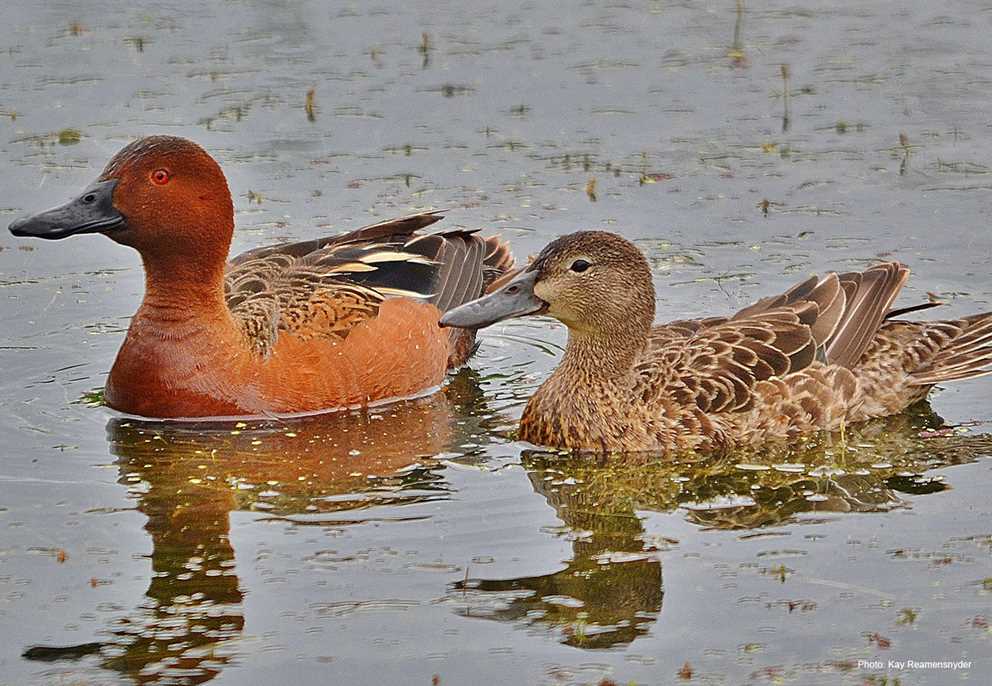Scaup, A Confusion of Ducks and Geese

Greater Scaup (male with the white plumage)
Photo Credit – Cornell Lab: All About Birds
California winter visitors, the Greater Scaup, have recently left the coastal creek near my home and returned to their breeding grounds along the West Coast up to Alaska. Previously, I have written about ducks known as Buffleheads and Teal; now, it is the turn of the Scaup: Lesser and Greater. The name probably originates from the Scot’s word scalp, meaning a bed of shellfish, a favorite food of the duck. Alternatively, some suggest the word comes from the female’s scaup call. Its nickname in North America is Bluebill because of its distinctive blue bill.
Both species of Scaup are medium-sized and similar in appearance, except for the longer, whitish band on the wings of the Greater Scaup and its rounded head, whereas the Lesser Scaup’s head is peaked. Large bodies of water, often near the coast, are home to the Greater, and the Lesser inhabits marshes and ponds. Both dive underwater for food, and while the most common dabbling duck in the United States is the Mallard, the Lesser Scaup is the most numerous diving duck.

Greater/Lesser Scaup (Greater is whiter)
Photo Credit – Cornell Lab, All About Birds
I recorded Scaup during my childhood in Yorkshire, England. After leaving their breeding grounds in Iceland, Scandinavia, and western Russia, they were winter visitors. As winters have become warmer and wetter, there are fewer Scaup, with the British population estimated to have shrunk 75 percent since the mid-1970s. Britain also hosts the “Lesser” variety as a rare vagrant, with the first recorded sighting in the 1980s.

Greater Scaup Global Range
Photo Credit – WWT Slimbridge Wetland Center
Blue: breeding; Red: winter and migration

Lesser Scaup Range
Photo Credit – Cornell Lab, All About Birds
What makes a Scaup a duck and not a goose since both are in the same waterfowl family, Anatidae? Experts identify the number of bones the bird has in its neck. Ducks have 16 or fewer, while geese have between 17 and 24. Other differences include ducks with broader and longer beaks, geese typically larger, and ducks with more colorful plumage, especially males.
For now, I must be patient. The Greater Scaup will return in October. In the meantime, I can look for the widespread Mallard found virtually on all bodies of water or search in California for breeding Gadwalls and Cinnamon Teals.

Gadwall
Photo Credit – National Audubon Society

Cinnamon Teal



